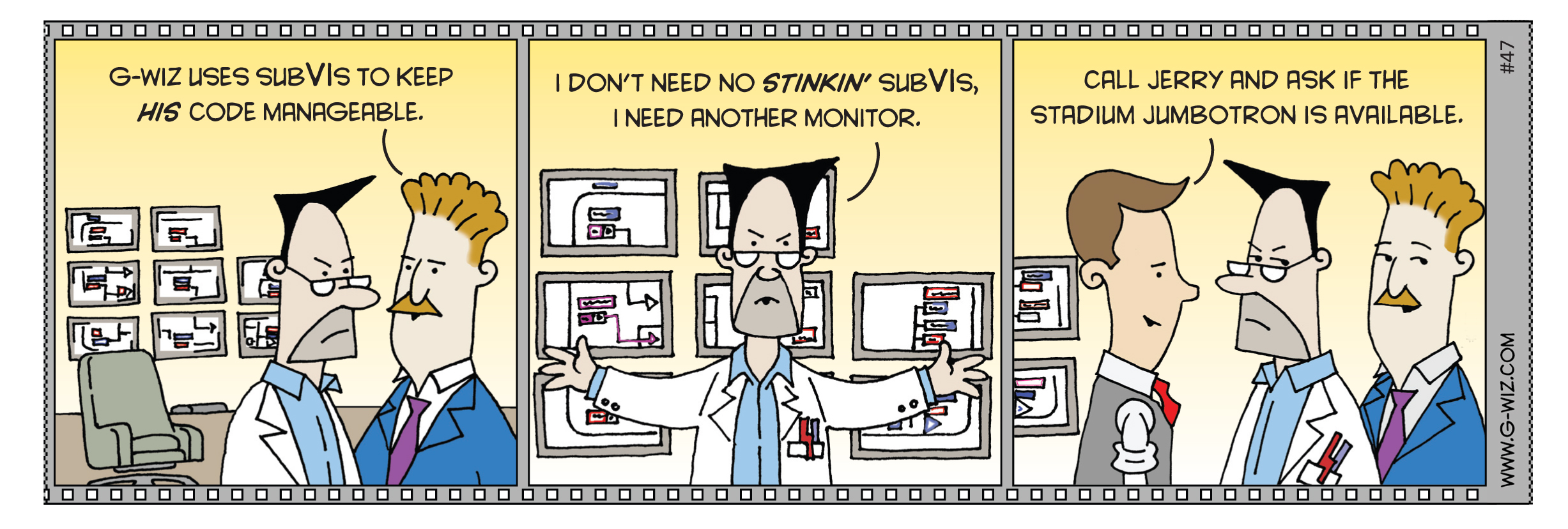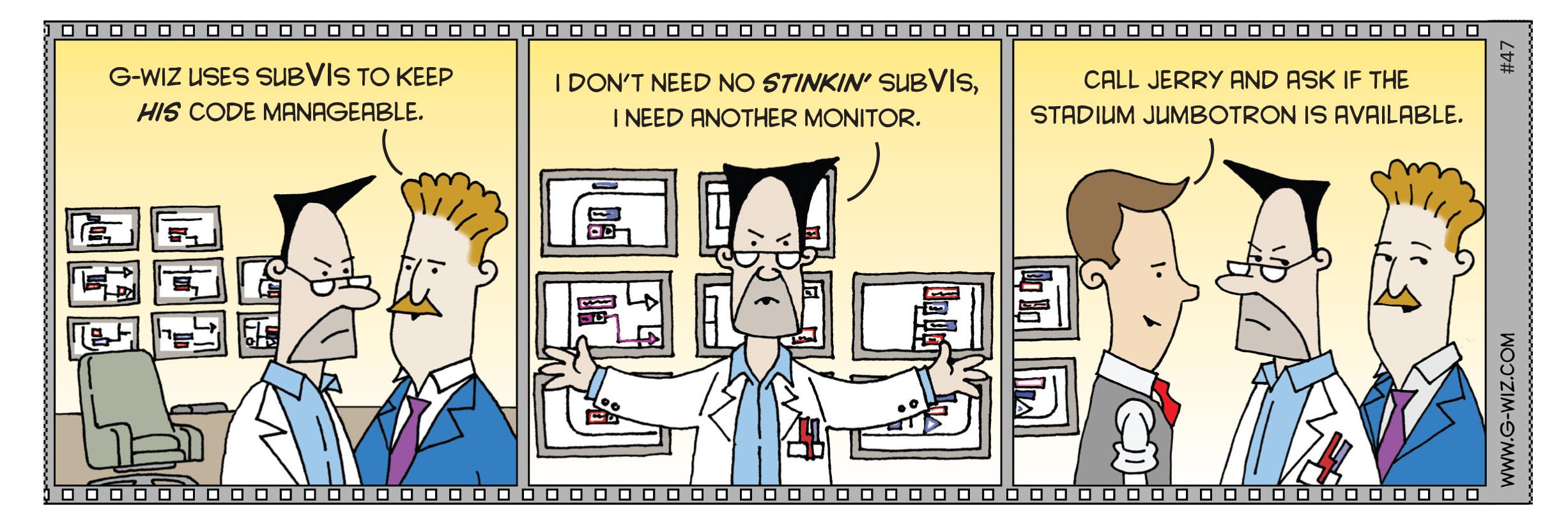
Block diagram size. It may be tempting to just consider it an aesthetic concern, but since when do engineers care about aesthetics?
In practice, an out-of-control LabVIEW block diagram is often the sign of a general lack of modularity in the graphical code. While the speed and ease of developing basic programs in LabVIEW is sometimes the culprit, this is a challenge in any programming language. Even in my C++ courses, the professors emphasized that the program Main() should not contain any functionality on its own, but instead call other items that each do their own jobs.
All of the techniques used to control block diagram size are features of more advanced code: Stacking code into case structures leads into State Machine architecture, and more flexible program flow.Creating subVIs for repeated code modules leads the programmer to enhance the cohesion of the code, and leads to ease in maintaining the code base. Grouping VIs by functionality into libraries makes them distinct on the block diagram, and in the project, but it also enhances portability and reuse of those libraries among developers. Using Dynamic dispatch for subVI calls leads to in-depth thought about Object creation, and the power that LVOOP can bring to a project.
So, while a compact, clean block diagram does not necessarily guarantee code quality, learning the steps and techniques of code quality will certainly enhance your block diagram.
